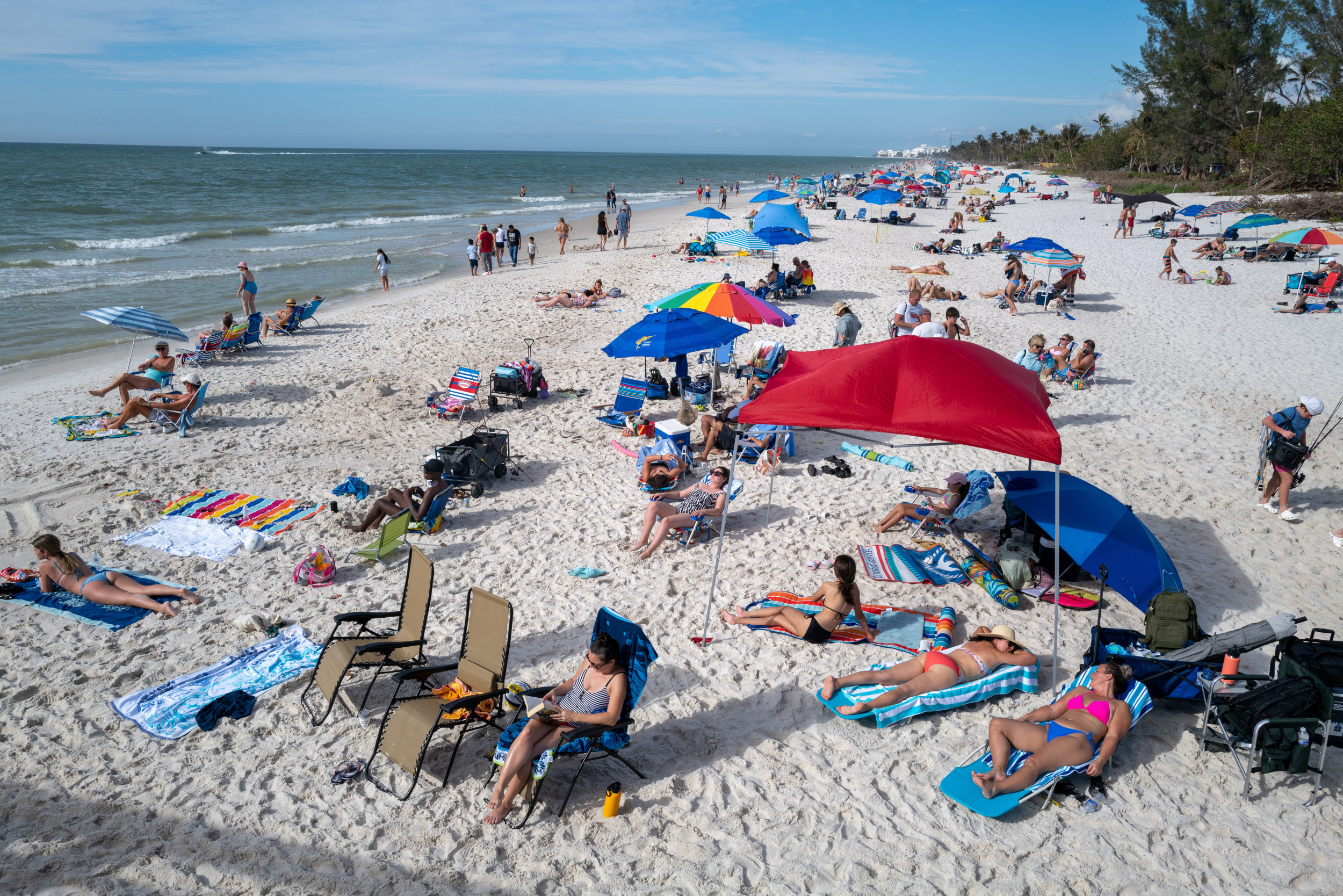
Fewer Americans are moving to the former hot move-to markets of Florida and Texas, according to a recent report, as the two states have become less attractive due to rising housing prices, climbing homeowners’ insurance, and more frequent and more severe natural disasters.
Why It Matters
The rise of remote work during the pandemic allowed tens of thousands of Americans to move away from crammed, expensive metropolises toward more affordable, more livable places. A majority relocated to Florida and Texas, chasing the states’ sunny weather, relatively affordable housing, and lower taxes.
But the flow of people moving to the two states has slowed down significantly since the end of the pandemic and the enactment of back-to-office policies, threatening to undermine the migration-driven economic growth that has led the two states to boom in recent years.
What To Know
Americans are generally moving less now than they were in the not-so-distant past, possibly because housing costs have risen pretty much everywhere in the union.
The movement of Americans across the country has declined significantly over the past 10 years, according to the latest U.S. Census data, with 87.9 percent of the population staying in the same home through those years compared to 85.1 percent a decade ago.
A majority of those who have been moving, however, have had one destination in mind: the Sun Belt—and especially Florida and Texas. In 2023, according to a recent report by Storage Cafe, Texas was the nation’s top state for net migration, with 137,582 newcomers, closely followed by Florida with 136,750.
These numbers, however, dropped in 2024, as the two states face higher home prices, hefty property taxes, and climbing homeowners’ insurance premiums.
According to Redfin, the former pandemic boomtown of Tampa, Florida, saw the biggest slowdown in domestic migration in 2024 of all 50 most populous U.S. metropolitan areas, with a net inflow of just over 10,000 residents. That’s less than one-third the 35,000-person net inflow reported in 2023.
Net inflow indicates how many more U.S. residents move into a metro area than move out, and includes domestic moves only.
Dallas saw the second-biggest slowdown, with a net inflow of roughly 13,000 residents in 2024, down from 35,000 in 2023.
Atlanta reported a net outflow of nearly 2,000 last year, which means 2,000 more U.S. residents moved out of the city than in. That’s compared to a net inflow of 17,000 the year before.
Other Florida and Texas cities—including Houston, Miami, Orlando, Fort Lauderdale, San Antonio, Fort Worth and Austin—were included in the list with the biggest migration slowdowns reported in 2024.
What’s Behind the Slowdown?
There are several reasons why Florida and Texas cities are now attracting fewer people.
One has to do with the higher cost of housing. The growth in demand during the pandemic, driven up by out-of-state newcomers, sent home prices through the roof at the same time as mortgage rates rose due to the Federal Reserve’s aggressive rate-hiking campaign to combat inflation.
Other states and cities in the South, the Midwest, and the Northeast have become more affordable, and they are now attracting a growing number of out-of-state immigrants, including Florida and Texas residents trying to escape rising costs in the two states.
The increased frequency of natural disasters such as hurricanes, flooding, and wildfires in the two states is also putting pressure on their property insurance markets. Rising premiums are now a factor that those hoping to buy a home in Florida and Texas have to consider.
Homeowners in the Sunshine State currently pay the highest premiums in the country, for an average of $2,625 per year, according to NerdWallet data. That’s 24 percent more than the national average of $2,100.

Spencer Platt/Getty Images
Back-to-office orders from employers in expensive coastal job centers are also preventing workers from relocating. Redfin found that in 2024, fewer U.S. residents left New York City and Los Angeles than the year before.
On top of all these reasons, growing uncertainty about the direction the U.S. economy is taking is discouraging Americans from making big decisions like purchasing a home and relocating to a new place.
What People Are Saying
Bryan Carnaggio, a Redfin Premier agent in Florida, said in a statement: “People used to move to Florida partly because they could get a deal. Now, people can’t afford to move here. The first questions from out-of-staters are, ‘How bad are the hurricanes? How high are insurance rates?'”
Cotality chief economist Selma Hepp said: “The last 25 years have seen home prices, homeowners’ insurance, and property taxes surge in Florida. When you add in the unflagging migration that is straining the state’s public services and inflated costs across the board, the pressure on the quality of life has become so great that it is beginning to tip the balance. Many households are finding it increasingly difficult to stay in the state.”
Real estate analysts Lance Lambert and Meghan Malas wrote in a January report: “Migration shifts—and changes in the pace of migration—matter for the housing market, as they can shift the local supply-demand equilibrium. Many of the softest housing markets, where homebuyers have gained leverage, are located in Sun Belt regions of the Gulf Coast and Mountain West.
“These areas were home to many of the nation’s top pandemic boomtowns, which experienced significant home price growth during the pandemic housing boom, which stretched housing affordability far beyond local income levels. Once offices reopened and mortgage rates spiked, pandemic-fueled migration quickly slowed in many parts of Texas and Florida.”
What’s Next
Despite the recent slowdown, both Florida and Texas are still seeing positive net migration—meaning that more people are moving in than out, as the two states retain strong job markets and continue to try to lower taxes even further.
Florida and Texas are also facing a “correction” in their housing markets which could help bring down prices and make them more affordable once again. The two states have been building more new homes than any other in the country over the past few years, but this growing inventory is struggling to find willing buyers as the U.S. remains in the midst of a housing affordability crisis.
In some cities in these two states, sale prices are falling or plateauing as migration slows and local buyers remain priced out of the market.





